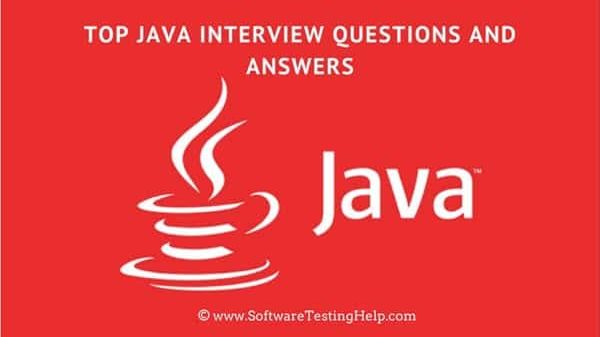JAVA Interview questions and answers for Experienced
Q1). What is a servlet?
In JAVA atmosphere a Java Servlet is a server-side technology used to extend the capability of the web servers by providing support for dynamic response and data persistence.Q2). What do you understand by Request Dispatcher?Request Dispatcher interface in JAVA is used to forward the request to another resource which can be HTML, JSP or any another servlet within the same application. There are two methods defined in this interface:void forward()void include()Q3). Is it possible to generate array volatile in Java?Yes, you can generate an array volatile in Java but then again only the situation which is directing to an array, not the entire array. This means that, if one thread deviates the reference variable to directs to the extra array, that will offer a volatile assurance, but if multiple threads are altering separate array elements they won’t be having ensues before assurance offered by the volatile modifier.Q4). Explain the concept of interfaces in JAVA?Interfaces are gentler in performance as likened to abstract classes as additional indirections are compulsory for interfaces. Additional key factor for designers to take into deliberation is that any class can spread only one abstract class through a class can implement numerous interfaces. Use of lines also places an additional burden on the developers at any time an interface is executed in a class; the developer is required to contrivance each and every technique of interface.Q5). What are real-world practices of volatile modifier?One of the real-world use of the volatile variable is to generate interpretation double and long atomic. Equally double and long are 64-bit extensive and they are reciting in two parts, primary 32-bit first time and following 32-bit another time, which is non-atomic but then again volatile double in addition long read is atomic in Java. Additional use of the volatile variable is to deliver a recall barrier, just like it is cast-off in Disrupter framework. Fundamentally, Java Memory model pull-outs a write barrier subsequently you write to a volatile variable besides a read barrier beforehand you read it. That means, if you inscribe to volatile field then it’s definite that any thread retrieving that variable will see the worth you wrote and everything you did beforehand doing that correct into the thread is certain to have occurred and any rationalized data values will also be noticeable to all threads, since the memory barrier flushed all additional writes to the cache.Q6). Explain the meaning of thread local variable in Java?Thread-local variables are variables limited to a thread, it’s like thread’s individual copy which is not public between numerous threads. Java offers a Thread Local class to care thread-local variables. It’s one of the numerous ways to attain thread-safety. Though be cautious while using thread locally adjustable in managed environment e.g. with network servers where operative thread out lives somewhat application variable. Somewhat thread local variable which is not detached once its work is done can possibly reason a memory leak in Java application.Q7). Explain the meaning of platform?A platform is the hardware or software setting in which a program executes. Maximum platforms in JAVA can be defined as a grouping of the operating system and hardware, Windows 2000/XP, Linux, Windows 2000/XP, MacOs and Solaris.Q8). What’s the variance amid an Abstract Class and Interface in Java?The main difference amid an abstract class and interface is that a boundary cans only own assertion of public static approaches with no existing application while an abstract class can have associated with any admittance specifies (i.e. public, private etc.) with or without real implementation. Additional key variance in the usage of abstract classes and lines is that a class which gears an interface must contrivance all the approaches of the interface while a class which receives from an abstract class doesn’t need execution of all the methods of its superclass. A class can instrument numerous interfaces but it can spread only one abstract class.Q9). What is the variance amid an Inner Class and a Sub-Class?An Inner class is a class which is copied up to the additional class. An Inner class has admittance privileges for the class which is nesting it and it can contact all variables and system well-defined in the outer class, whereas a sub-class is a class which receives from another class named Superclass. Sub-class can contact all public and protected approaches and fields of its superclass.Q10). Can we affirm a class as Abstract deprived of having an abstract method?Yes, we can generate an abstract class via abstract keyword beforehand class name even if it doesn’t have any abstract method. Though, if a class has even one abstract technique, it must be acknowledged as abstract or else it will give an error.

